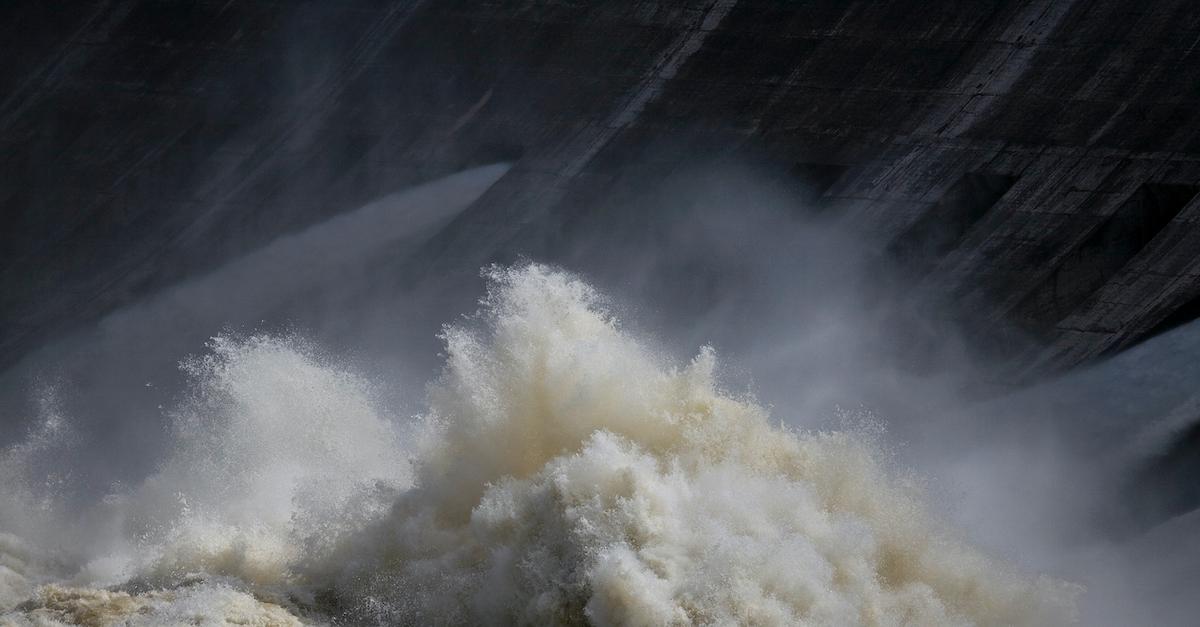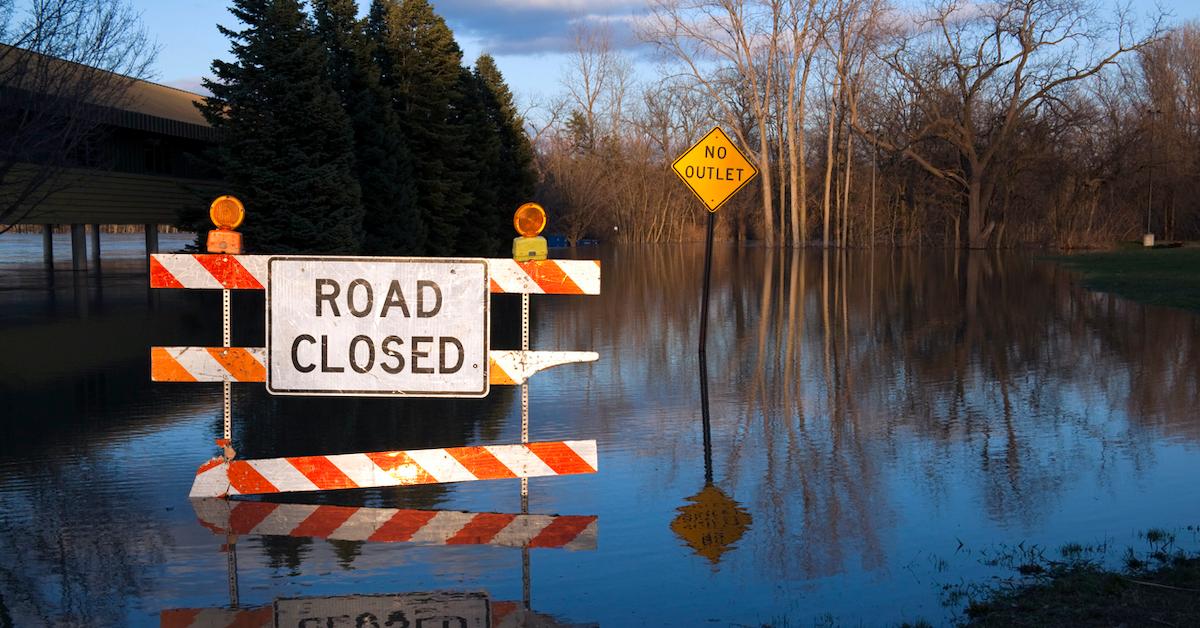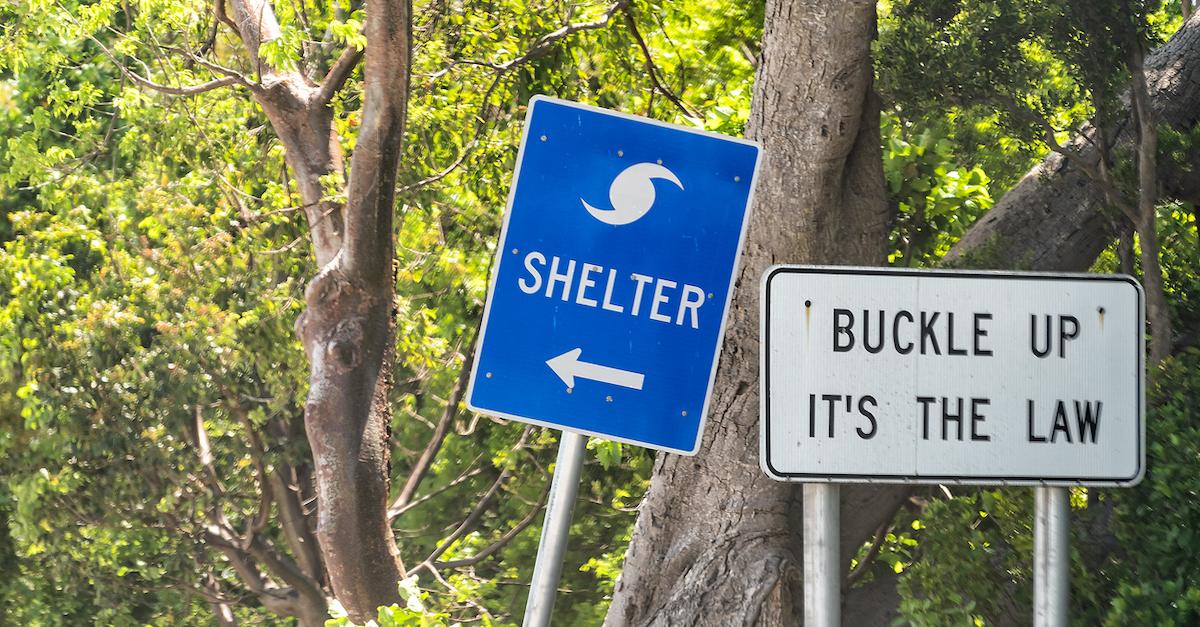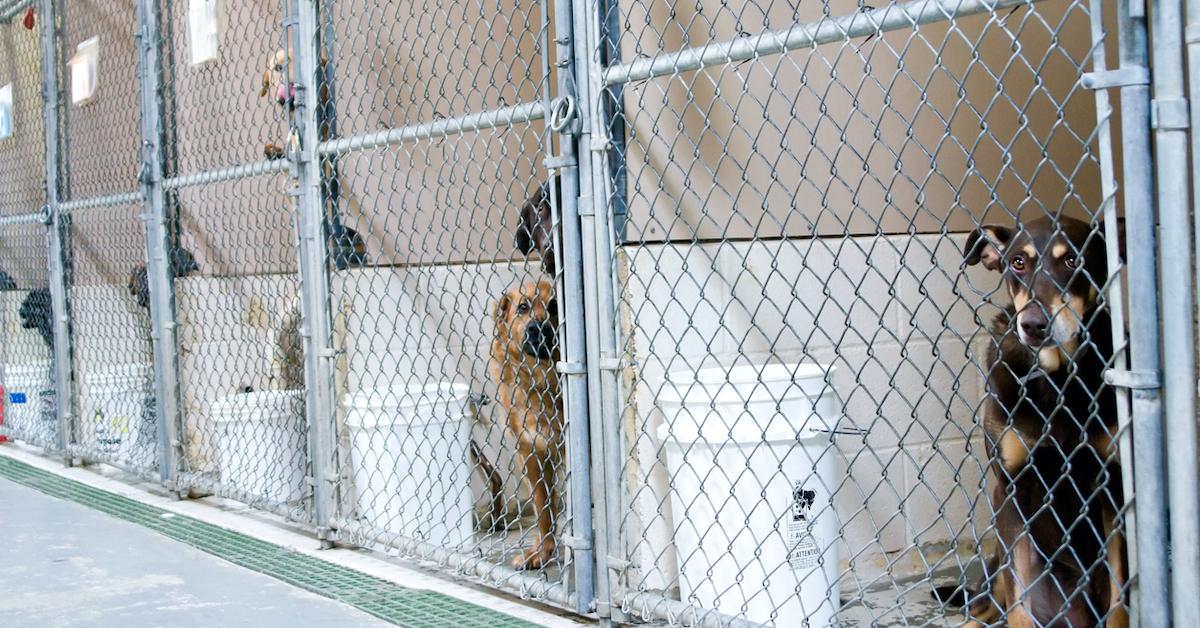Midland County, Michigan's Dam Broke — Here's What That Means For the Community
Updated May 20 2020, 3:16 p.m. ET
Midland County, Mich declared a State of Emergency on Tuesday, May 19, after the Edenville Dam and Sanford dams burst, according to AccuWeather. Thousands of residents were forced to to evacuate their homes, as the downtown area could reportedly be submerged under nine feet of water. Flash flood warnings are also in effect for Midland City and Freeland, Mich.
"Anyone near the river should seek higher ground immediately, avoid driving into flood waters, and continue to heed evacuation orders given by local authorities," according to the National Weather Service. "Life-threatening flooding continues today."
As residents are seeking refuge, here's what we can expect for the central Michigan community, based on what generally happens when a dam breaks.

How did the Midland County dam break?
There are four reasons why dams generally fail — per University of Calgary's Energy Education, dams can experience overtopping, which is a design issue that causes a reservoir to fill far too high with water, especially during heavy rainfall. There's also the possibility of foundation defects, which are infrastructural problems with the dam's slopes, which can be unstable and break. Piping and seepage failure, which is caused by erosion, is also a possibility, as is conduit and valve failure.
Apparently, natural disasters can also cause dams to break, such as earthquakes, landslides, extreme storms, or heavy snow-melt. Manmade mistakes can also take a toll on the structure of a dam, including equipment malfunction, structural damage, and vandalization.
According to CBS News, the Tittabawassee River was at an unusually high 30.5 feet on Tuesday, May 19, and it was continuing to rise — by the following morning, the river had risen to 34.4 feet in Midland, and as the flood stage is 24 feet, the governor announced a state of emergency, warning residents of imminent flooding. Since Michigan has been experiencing record amounts of rain, it seems as though the dam may have burst due to overtopping and the unusually heavy amounts of rain.

What happens to the residents of a city when a dam breaks?
Dam failure often leads to dangerous flooding, and residents in the surrounding areas are often forced to evacuate their homes and seek shelter elsewhere, according to Ready. Electricity in the cities are generally turned off, to avoid electrocution, and the Federal Emergency Management Agency (FEMA), as well as the U.S. Military, are generally sent to the affected area to provide aid, according to Dam Safety.
Midland County's conditions are also unique — according to Bloomberg, the central Michigan area is home to several factories where pesticides and styrofoam products are made, which means there may be toxic chemicals in the water. Once the chemicals and water is properly cleaned, residents will be able to return to their homes.

Is there any way to help out Midland County?
There are a number of ways to help those affected by the floods in Midland County, Mich. According to MLive, the Humane Society of Midland County (HSoMC) is graciously accepting donations of dog and cat food, blankets, bleach, cleaning supplies, as they are taking in all displaced cats and dogs from the surrounding communities. If you're in the area, any small donation of the above supplies counts.
Additionally, the Midland County Emergency Food Pantry Network is currently accepting monetary donations online or by mail. And if you shop at Kroger's, you can designate the Midland County Emergency Food Pantry network on your Kroger Card, to donate to EFPN when you shop, for no extra cost.

The disaster in Midland County has been truly unthinkable, especially during these trying times. We're keeping the residents of the monumental Michigan metropolis in our hearts.
